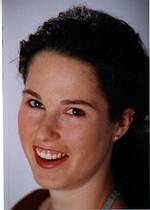Guidelines for Consumer Testing - guidance from ESN members
In this series ESN members give their solutions to the most frequently asked questions from product developers and marketers.
Is there a market niche?

Sensory mapping in combination with a consumer acceptance test can be used to identify market potential.
When a new product is going to be launched on the market, the question arises how the product should be positioned so that it meaningfully supplements or replaces the existing offer. Regina Gramlinger of the company SAM Sensory and Marketing International, Munich, says that, “with the help of the sensory mapping, niches within a product’s portfolio or range can be identified. Among other things, such a mapping in combination with a consumer acceptance test reveals the consumer needs that have not yet been sufficiently covered.”
Gramlinger suggests a two-step procedure that includes an objective descriptive step as well as a subjective hedonic step:
„In the first step all products within a certain range are profiled by means of quantitative descriptive analyses. After that, a principal component analysis enables a sensory mapping of the products to clearly identify the various products and to allow an efficient selection of different products for the second step.
In the second step, an acceptance measurement of the selected products using a sample of targeted consumers is executed. This shows whether the product is liked by the majority of the consumer sample or a specific sub-group. Afterwards, a detailed usage & attitude questionnaire is included to characterize the different clusters.“
Step 1: Sensory Mapping
„For the descriptive profiling, a group of 8-12 trained panellists measures the intensity of all specific product attributes. By means of an analysis of variance (ANOVA), all tested products can be clearly characterized and distinguished from each other. The obtained data are also analysed by means of a principle component analysis (PCA). As a result all attributes and products are displayed as a two-dimensional map. With this map, products with similar attribute intensities can be quickly identified, since they are positioned in close proximity, whereas products with dissimilar attributes are located at greater distances from one another on the map. For the second step, to reduce the amount of products for the consecutive acceptance measurement, only products from different positions on the map should be considered for further investigation. It is recommended that a minimum of 8 products be selected for this second step.“
Step 2: Consumer test
In the second step, consumers hedonically judge the pre-selected products in a CLT or Home-Use-Test. Gramlinger stresses that, „It is crucial to choose a sufficient number of consumers in order to calculate and investigate different sensory clusters and target groups. This is important when identifying possible niche products and the corresponding consumer sub-groups (clusters).“ She continues: „To obtain statistically valid results, each sub-group should contain a minimum of 60 consumers. In addition to the product questionnaire data, data from an extended usage & attitude questionnaire will help to characterize the different sensory clusters. As cluster analysis usually ends up identifying two to three clusters, we normally recommend a sample size of N=150 consumers, in order to achieve at least two reasonably-sized clusters.”
The product questionnaire should, at the least, contain the overall-liking question. Further questions about appearance, odour, taste, mouthfeel and aftertaste can be included. The usage & attitude questionnaire contains questions concerning the demographics of the consumer, consumption behaviour, attitude towards different brands and products, etc.
Besides the standard consumer test data analyses (means, ANOVA, etc.), a cluster analysis is conducted. The cluster information is linked with the data of the usage & attitude questionnaire to characterize the different consumer sub-groups (clusters).“
Regina Gramlinger concludes, „This procedure identifies the different sensory clusters within the consumer group, and what type of consumer belongs to the identified sensory cluster. It connects the sensory cluster with the preferred product, and finally, it provides an answer to the question 'Is my product a niche product?’.This valuable information can also be further used for the development of an existing product, in order to meet the demands of a specific consumer sub-group.”
Are there quicker, more economical approaches? Gramlinger emphatically states that, “any further economisation of this approach, i.e. downgrading the sample size and number of products, will degrade the validity of the results. The product profiling in the first step already helped to reduce the number of products in the consumer test.”
For more information please contact:
Regina Gramlinger
SAM ASAP Sensory and Marketing
Germany GmbH
Oetztaler Strasse 1
D - 81373 München
Phone:+ 49 89 743 76 70
Fax:+ 49 89 769 69 63